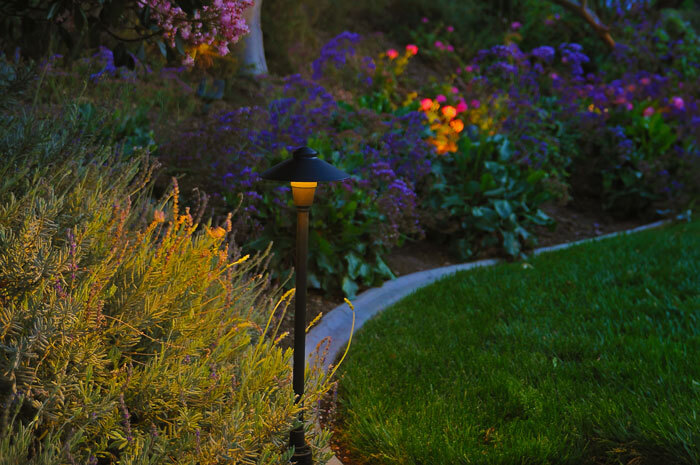
While some bugs might delight in chomping on your landscaping, other insects are great for keeping your yard green and healthy. What can you do to encourage these helpful insects? Well, they’re a little bit like us. They need safety, food, water, and a place to live.
There is nothing like a non-toxic environment, a bit of nectar, a sip of water, and a protected spot to retain a beneficial insect. Here is how to make your yard attractive to beneficial insects by looking after their basic needs.
First, avoid using pesticides. You do not want to harm the insects, and you do not want to starve them by poisoning their favorite insect food sources. Second, beneficial insects are more likely to remain in your yard if you provide pollen and nectar sources. Common herbs such as fennel, dill, spearmint, caraway, coriander, and tansy are a good start. Plant a border with wildflowers like yarrow and coneflower. Native wildflowers as such are an especially low-maintenance choice as their hardy nature requires less watering while they offer unique resources to native insects. Cultivate diverse flowering plants, to provide a succession of blooms.
Water is also important. Sink a few shallow pans with small rocks into the soil. They will fill from rain or watering. Finally, provide places to shelter and overwinter by adding shrubs, vines, or small evergreens. If these sheltering plants include berry-bearing plants such as chokeberry, bayberry, sumac, and viburnums, the fruits will attract grub-eating birds for additional pest control.
Most of the helpful insects we’ll include in our list are predators of annoying lawn and garden pests. However, some bugs can actually build up your soil, adding nutrients to your lawn. What bugs help grass grow? Look for bugs that break down dead organic matter, eat pests, or aerate the soil. Read on for more about the helpful insects that might already be in your backyard.
Lady Beetles
Also known as ladybugs, they are perhaps the most widely recognized helpful insects. Why do ladybugs get so much credit?
As adults, and especially in the larval form, ladybugs feed on aphids and other small, soft-bodied insect pests. In fact, it’s said that a single lady beetle may eat as many as 5,000 aphids in its lifetime. Adults have short legs and antennae, are ¼-inch or smaller, oval, brightly colored, and often spotted. Their ravenous larvae resemble tiny alligators with flat, gray bodies tapering to the tail, with red or orange spots. Be sure to understand what ladybug larvae look like as they look completely different from the hard-bodied adult form, and you may be getting rid of them without knowing.
Ground Beetles
Also known as “caterpillar hunters” they ground beetles are valuable nocturnal predators with a taste for beetle grubs, caterpillars, army-worms, and cutworms. These fast-moving creatures, ¾- to 1-inch long with flattened blue, black, or brown bodies, spend their days hiding under stones and garden debris.
These bugs are good for your lawn from the moment they hatch. The larvae have segmented bodies and are long, dark, and tapered. They burrow into the soil and feast on pests below the surface. Take that, chinch bugs!
Mantises
A mantis is a large green or brownish insect up to 4-inches long. Called praying mantis after the position in which they hold their front legs, they are voracious predators who even eat their own young.
An important note! Landscapers should be aware that two mantis species are considered invasive. The aggressive Chinese and European mantis threatens native mantis species as well as other beneficial insects such as the iconic Monarch butterfly.
While still considered beneficial, purchasing mantises from garden stores to protect your landscaping is not encouraged. Their non-selective diet may lead them to eat helpful insects as well as pests.
Lacewings
Green to the east of the Rocky Mountains and brown to the west, these lacewings are delicate ½- to ¾-inch-long insects that hold their clear and highly veined wings up like a tent.
All lacewings have four life stages. You might find winged adults, larvae, pupae, and eggs in your backyard. The helpful insects have the most impact when they’re at the wingless, larvae stage. Typical teenagers, immature lacewings have a voracious appetite. The so-called “aphid lions” feast on caterpillar eggs, leafhopper nymphs, and other pests.
Big-Eyed Bugs
Especially helpful where chinch bugs are a problem, this bulging-eyed, 1/8- to ¼-inch-long black or gray insect eats leafhoppers, aphids, and caterpillars. Unlike most insect predators, the bugs in this family (Lygaeidae Geocoris species) will also take an occasional bite or two from plants.
Spined Soldier Bugs
These beneficials are often mistaken for their stinkbug pest cousins. At about ½-inch-long, this chomper of caterpillars, grubs, and fall armyworms has a shield-shaped body. The Spined Soldier Bug can be set apart from stinkbugs by their pointed shoulders and a black mark on the wing membrane.
Braconid Wasps
As long as they aren’t harassed, braconid wasps do not sting humans. They do, however, make a big impact on keeping the pests in your yard under control.
These helpful insects are slender 1/10- to ½-inch parasites. They deposit eggs either inside of the host prey or in pupal cocoons on or near a dead host insect. A Small species of braconid wasps infests aphids. Larger species infest a wide variety of beetles, caterpillars, and other insects.
So, are insects seriously good for your lawn?
You can rest easy knowing that not EVERY bug in the yard is out there trying to feast on your carefully cultivated grass and plants. Now, go make that lawn look exactly how you want it to with some of our other helpful articles.



